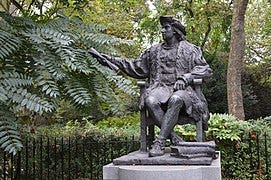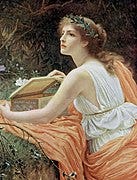Why We Need the Past
In the ancient Greek myth of “Pandora’s Box,” Zeus, wishing to take revenge on mankind for Prometheus’s theft and gift of fire, created Pandora, a beautiful woman, as a gift for Prometheus’s brother Epimethius. Pandora was given a box and told not to open it under any conditions. Naturally, she did, causing all the ills of the world to fly out. The story has sometimes been compared to that of Adam and Eve in the Bible, where the eating of the apple from a forbidden tree led death and suffering to enter the world.
Whatever their other differences, the stories agreed on one key point: the older age was the better. “The age was best which was the first… but being spent, the worse and worst, times still succeed the former.” The 17th century English poet Robert Herrick was speaking of the present, not of the past; yet ironically, his words capture the nostalgia for an original golden age, long lost in the distant past, from which we have since decayed. The Greeks had this view, imagining life as a series of succeeding (and declining) ages, the golden age being first. The Hindus had a similar view, with their oldest age, the Satya Yuga, being the oldest and best.
This view of history dominated though the European Middle Ages and at least the end of the Renaissance. The idea of the present as a decline from a better past offered numerous benefits: it offered the man of the Middle Ages the pleasure of admiration when he contemplated his ancestors. He was offered heroes and guides. He walked in the footsteps of giants. Even in his successes and triumphs, this encouraged humility. For, not only did he walk in the footsteps of giants, he stood on their shoulders. In 1159, John of Salisbury wrote: “Bernard of Chartres used to say that we are like dwarfs on the shoulders of giants, so that we can see more than they… not by virtue of any sharpness of sight on our part... but because we are carried high and raised up by their giant size.”
This view has also long been enshrined in American history where we have celebrated historic heroes, revered those who founded our nation, celebrated them on national holidays, and reared statues and monuments in their honor. And having our eyes fixed in the past gave us a direction too for the future, for our heroes were not only men to admire but models to be imitated.
This view of the past has been deeply woven into the fabric of the Catholic Church. In this way, the Church revered its own heroes, the saints (the older the better) and the traditions handed on over the years. Tradition became a major lens through which any idea of claim had to be judged. Novelty was not forbidden, but it had to submit itself to be judged by the past, by Scripture and Tradition.
And then something went wrong. When exactly is not easy to say. Humanism and the Enlightenment were a major part of the story, with Humanism rewriting many past philosophies and the Enlightenment rejecting it all. Later, in the 19th century and beyond, Darwinian evolution became more than a scientific theory of the origin of species; it became a scientific dogma, or worse, a social dogma, as it was interpreted in an entirely unscientific manner to lead to a new view of history. The old became bad and the newer became the better. The modern evolutionary/progressive view of history turned the past into a long dark age, a trail of tears from which modern man was only slowly and recently escaping. The golden age was moved from the distant past to the distant future. Man no longer had his feet firmly in the past as he moved ahead; he seemed to have nowhere solid to stand at all. And with his golden age in the distant future and not the past, it had not yet happened. Hence, it had to be, and could be, made in the image of modern man’s own desires.
As the past became a sort of dark age, it became at best a shameful time from which modern man had escaped and at worst, a threat. For no longer could a man find guides and heroes in the past and no longer a path for his feet to walk. The past became limiting, our ancestors not the giants on whose shoulders we stood to see ahead, but villains who stood in the way of remaking the future in our own image. And they had to be destroyed. It is hard to see the wave of statue smashing that so recently swept over America as anything except a pitiful and desperate attempt to free ourselves from a past that has become seen as limiting and oppressive. How else are we to see demands to cancel various historical figures like Christopher Columbus, Abraham Lincoln, Ulysses Grant, George Washington, St. Junipero Serra?

This is why attempts to divide Catholicism from its own tradition is so tragic. Even in the Church, the progressive view is tempting, inviting us to free ourselves from an oppressive past and remake the Church in our own image, in the image of a future golden age with new music, new architecture, new languages, new rituals. The past becomes our dark secret and a dark age from which we have escaped. And so we deprive ourselves of heroes, of models, of guides, of the humble pleasure of admiration of greater men and greater deeds.
Henry Wadsworth Longfellow urged:
Lives of great men all remind us
We can make our lives sublime,
And, departing, leave behind us
Footprints on the sands of time…
Americans in general, and Catholics in particular, need, now more than ever, to rediscover their heritage: their art, culture, philosophy, theology, worship, and heroes of their past, so that perhaps again, someday, we will stand firm on the shoulders of giants.



Excellent article that puts things in there proper perspective.